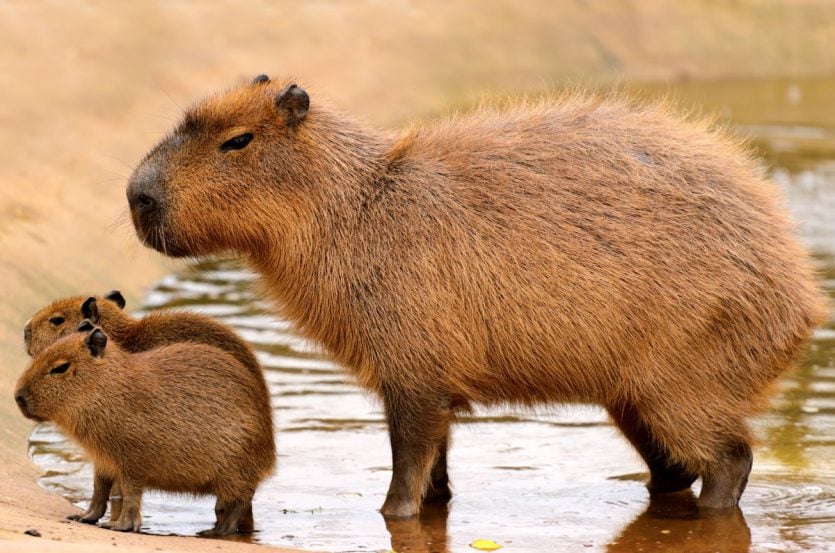When it comes to planning a South American vacation, there’s a lot to consider. Factors like climate, time of year and the availability of activities all play a part. So, too, does the likelihood of seeing certain animals. The rivers and rainforests of South America offer adventurers the chance to come face to face with all sorts of awesome fauna. One species that you may not want to travel around the world to see however, is the capybara – also known as the largest South American rodent. As it happens, the capybara is of great interest to the locals. Here’s what you need to know.
The capybara: The South American rodent you’ve never heard of
Forget mere mice and rats. This South American rodent is like nothing you’ve ever seen. The capybara is actually the largest rodent in the world and is native to South America. It’s also known as the chigüire, and it’s a close relative of the guinea pig. One key difference is its size: Adult capybaras can grow up to 134 centimetres in length and up to 62 centimetres tall.
Where does the capybara live?
The capybara is by nature a South American rodent, occupying virtually every country on that continent with the notable exception of Chile. It inhabits rainforests and savannahs and likes to live close to bodies of water. Despite this, they are sometimes found further afield, and there have been sightings of the rodent as far away as Florida and California. Most likely, these were individuals that have escaped from captivity.

What does the capybara eat?
Rodents get a bad rap generally, in no small part due to the negative image so many of us have of rats. Where rats are dirty scavengers, happy to feed on scraps, the capybara is a selective eater and is, in fact, a herbivore. For the most part, this South American rodent chows down on grasses, tree bark, fruit and aquatic plants. Its diet is strict, and there is plenty that it simply won’t eat. They do, however, eat their own faeces. This generates bacteria to help break down and digest their food, notably the cellulose from grass.
Why are South Americans so interested in capybaras?
Throughout parts of South America, locals have developed an interest in the capybara. This can be a blessing and a boon for the South American rodent, depending on the situation:
- Some South Americans hunt capybaras for their meat and fur. In Venezuela, capybara meat is particularly popular during the Christian Lent period. Other regions consider the meat inedible.
- Separately, some livestock farmers kill capybaras, as their taste for grasses competes directly with the food supply of their cows.
- On the other hand, capybaras are sometimes farmed in order to protect wetland ecosystems.
- Capybaras are popular in zoos and captivity, within South America and further afield. Some North Americans have taken to keeping the South American rodents as pets, not always legally. This may go some way to explaining sightings of the animal in the USA.
No comments yet
There are no comments on this post yet.






Leave a comment